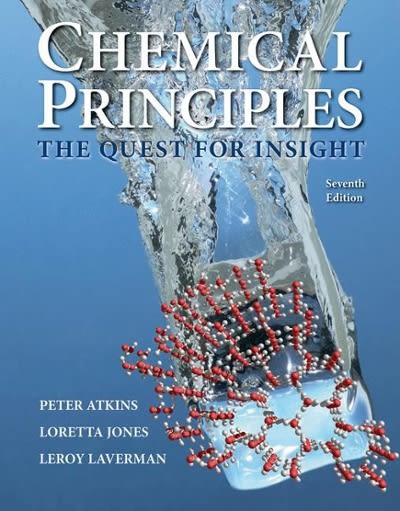Engineers studying internal combustion engines, such as those in automobiles, and looking for ways to increase their
Question:
Engineers studying internal combustion engines, such as those in automobiles, and looking for ways to increase their efficiency, must understand how the entropy of gaseous mixtures is affected by different conditions. Calculate ΔS, ΔSsurr, and ΔStot for
(a) The isothermal, reversible expansion and
(b) The isothermal, free expansion of 1.00 mol of ideal gas molecules from 8.00 L to 20.00 L at 292 K. Explain any differences between the two paths.
ANTICIPATE (a) You should expect a positive increase in the entropy of the expanding gas itself but, because the expansion is reversible, no change in the total entropy. (b) For an irreversible expansion, you should expect the total entropy change to be positive.
PLAN Because entropy is a state function, the change in entropy of the system is the same regardless of the path between the two states. Thus, as stated in the text, Eq. 2 of Topic 4F (ΔS = nR ln(V2/V1)) can be used to calculate ΔS for both part (a) and part (b). For the entropy of the surroundings, find the heat transferred to the surroundings. In each case, combine the fact that ΔU = 0 for an isothermal expansion of an ideal gas with ΔU = w +q and conclude that q = –w. Then use Eq. 4 in Topic 4A (w = –nRT ln(V2/V1)) to calculate the work done in an isothermal, reversible expansion of an ideal gas and Eq. 1 of this Topic to find the total entropy change.
Step by Step Answer:

Chemical Principles The Quest For Insight
ISBN: 9781464183959
7th Edition
Authors: Peter Atkins, Loretta Jones, Leroy Laverman





